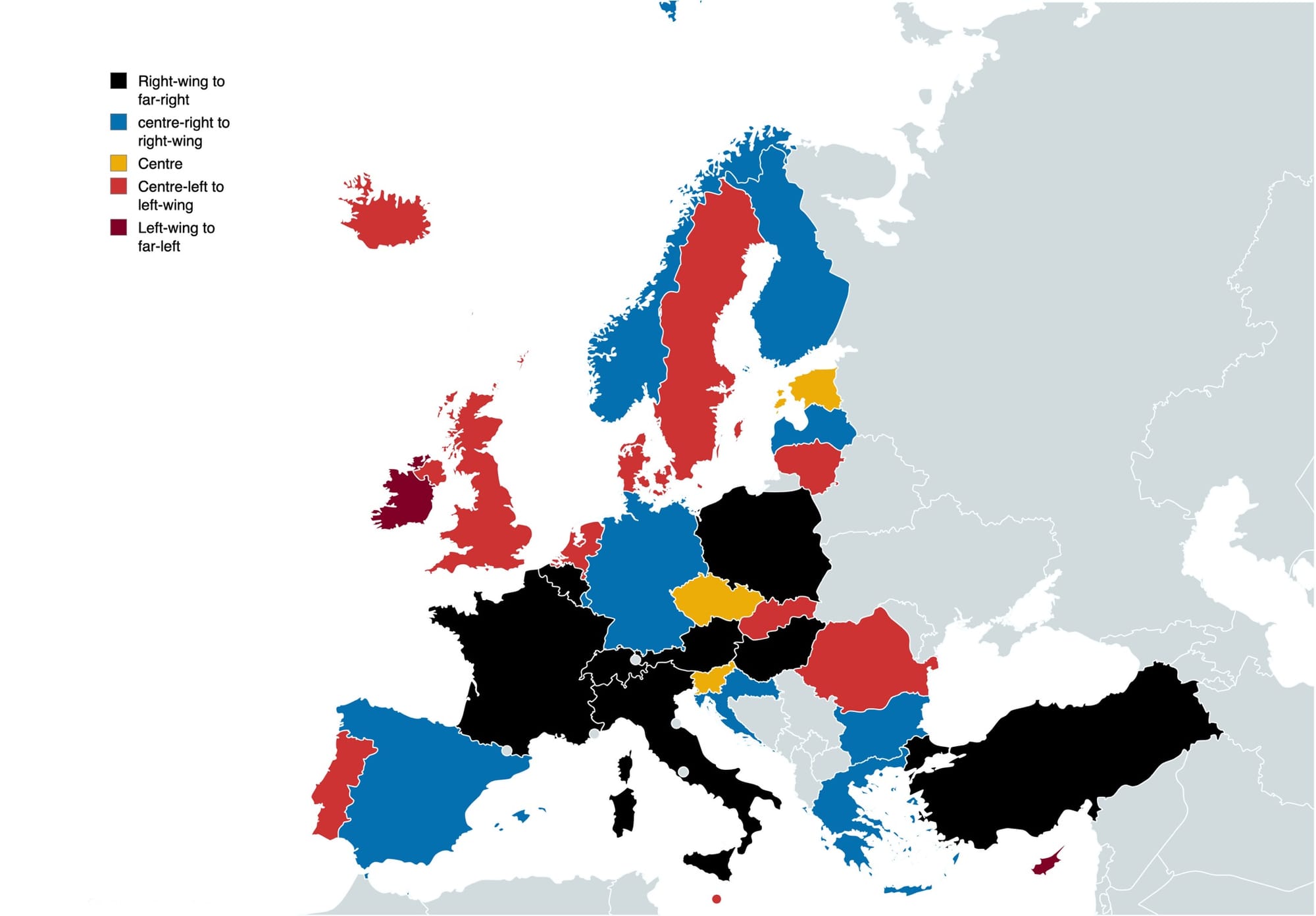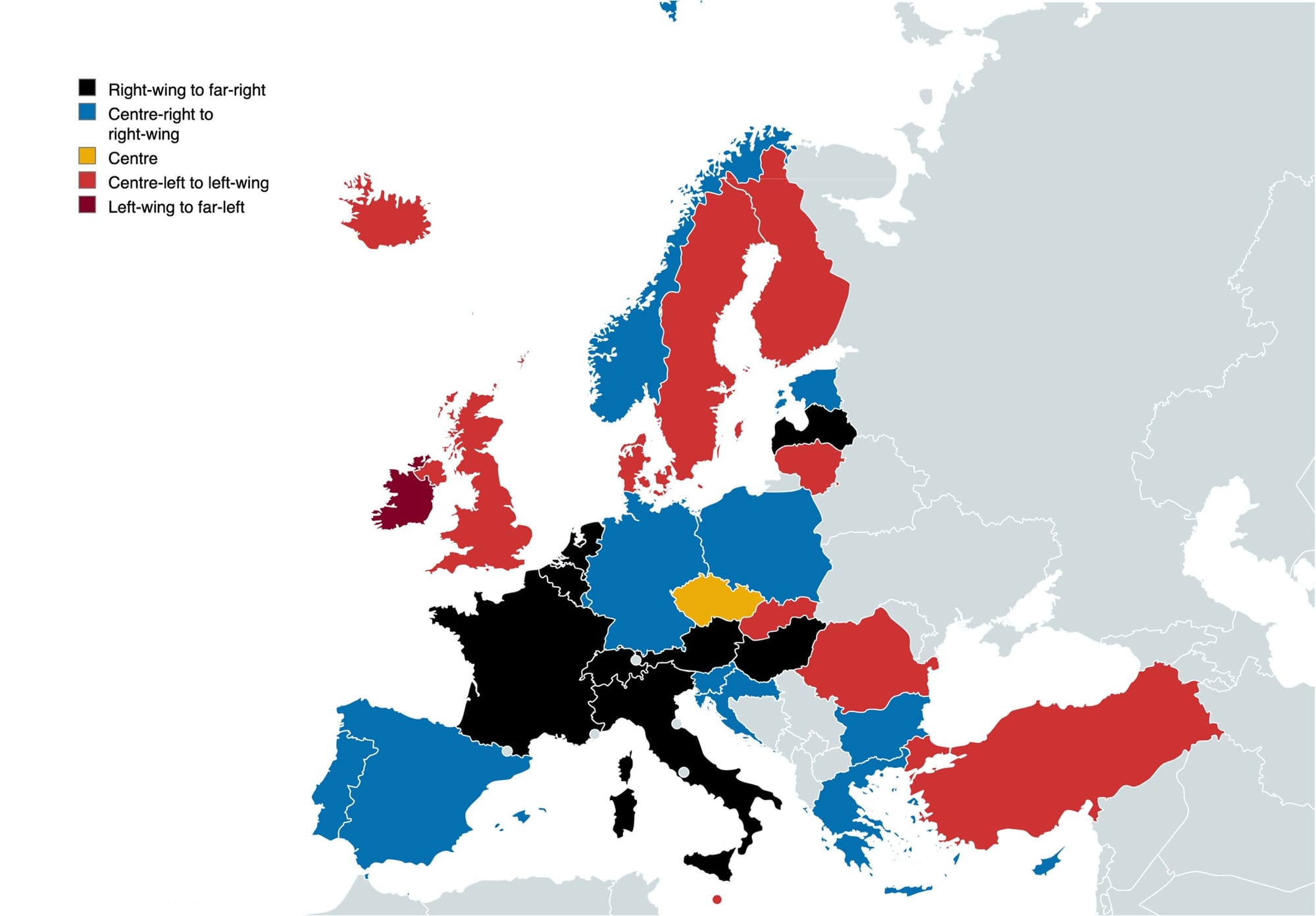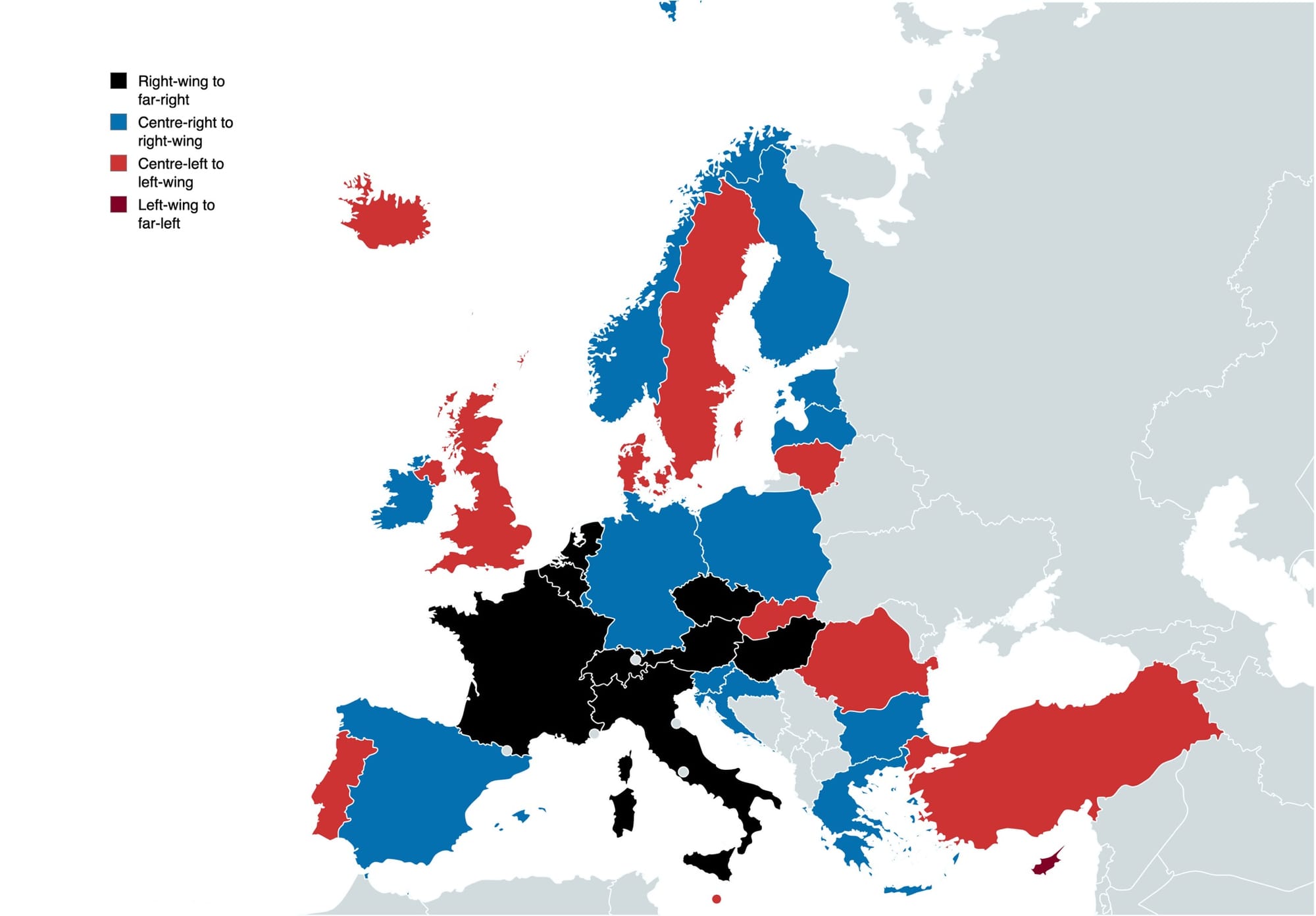Numbers Don't Lie: the Right Cements Control of Europe

Settling into a lesser campaign period - in which the European Union, United Kingdom and France have held their respective elections - after an intensive one the centre has come out as a clear loser. From Paris to Tallinn the liberal ideals of yesterday are being pressed to the verge; the centre is hardly gone, though, in retreat. Moreover, the left-wing to far-left have faced increasing problems as their largest strongholds weather winds of change. A new Europe is on the horizon, a renewed Europe, and what it will be is anyone's guess. However, looking at the current state could help determine what future Europeans are looking for now, alongside a comparison with the past to identify differences.
As a benchmark the map below showcases the largest political party in each country's domestic politics, this map in particular reflects the result 1 year ago (to compare with current figures). Ideologies are classified through EU party affiliation or what the consensus agrees upon.

The rise of the right-wing to far-right was a fact. Longstanding nations such as Poland and Hungary had been joined by heavyweights such as France and Italy. The FPÖ in Austria continued to retain prior gains from the ÖVP that had been embroiled by scandal. While the CHP in Türkiye was setting the stage for gaining momentum against the AKP. The main opposition parties of Germany and the United Kingdom held immense support reflecting the displeasure with the sitting governments. In Slovenia the centrist popular movement and new party held strong with signs of the SDS, the prior government holder, gaining ground. Sinn Féin in Ireland faced a similar problem with the notable difference of them being the opposition. Irish voters began re-shifting their focus toward immigration, step by step, an area in which Sinn Féin did not stand to retain or gain support. In total the centre-left to left-wing had 10 countries in which they were the largest, the centre-right to right-wing held 9 countries, the right-wing to far-right mustered 8 states, and the centrist secured 3 while the dark red category held 2 nations. The map below showcases the same information as the one above, however, with last month's polling.

Last month marks a staunch difference; the Netherlands and Latvia have seen right-wing to far-right parties surge, the dutch PVV is enjoying some of the highest polling any party has received the Netherlands in modern times, while National Alliance in Latvia barely scrapped a lead over the centre-right New Unity. However, the notable change of Poland from PiS to Civic Coalition is a major blow, as one of the longstanding bastions of the right-wing to far-right Poland had become synonymous in many ways with the movement, alongside Hungary. However, now as the country has moved back toward the centre other nations will have to pick up the pace in order to keep the right-wing to far-right alive. Though PiS still polls well in Poland. Otherwise both Estonia and Slovenia joined the centre-right to right-wing as the incumbent governments' popularity fell. Smaller differences, however, still noteworthy is the competitive polling in both Finland and Portugal that this month favoured the centre-left and centre-right. This was one of the strongest showings for the centre-right to right-wing to date. With a total of 12 (+3) blue states, 10 (-) red, 8 (-) black, 1 centrist (-2) and 1 (-1) dark red. Beneath is the same information as above, however, with the most recent polling.

The notable absence of the centre is a first and reflects a negative trend for the once strong movement. Slowly the support for liberal parties such as Renaissance, the VVD or Reform has seeped away, unable to win it back the few holdouts have succumbed to increasingly hostile right-wing movements. The last country, the Czech Republic, has continued having ANO 2011 as the largest party, however, as the faction joined the Patriots for Europe grouping its categorisation shifted. The centre's best standing is in Slovakia, in which the category polls only a few point behind.
Moreover, the collapse of Sinn Féin in Ireland has been sudden, with the party losing substantial support between now and even last month. The tight rope that has been immigration has alienated the traditional SF voters as the party took an open stance toward the question in a bid to keep and expand its urban base. The governing centre-right Finn Gael has mustered continued growth. However, the independents, not tied to any party, have enjoyed the greatest increase. Yet the left-wing to far-left is secured by a shift in Cyprus. Dark red remains on the map, if even smaller. Lastly both Portugal and Finland reverted back to their old preference, though the Iberian nation is highly competitive. In total there are 13 (+1) blue countries, 10 (-) red, 8 (-) black, 1 (-) dark red and 0 (-1) yellow.
Perhaps this month is not a vastly important one; the differences are minimal as the continent settles into much of the same. Yet the right in general has clearly cemented itself as the defining force in many countries' domestic politics, whether it can remain there depends if the left or centre can effectively challenge the categories. However, such a move remains to be seen.



